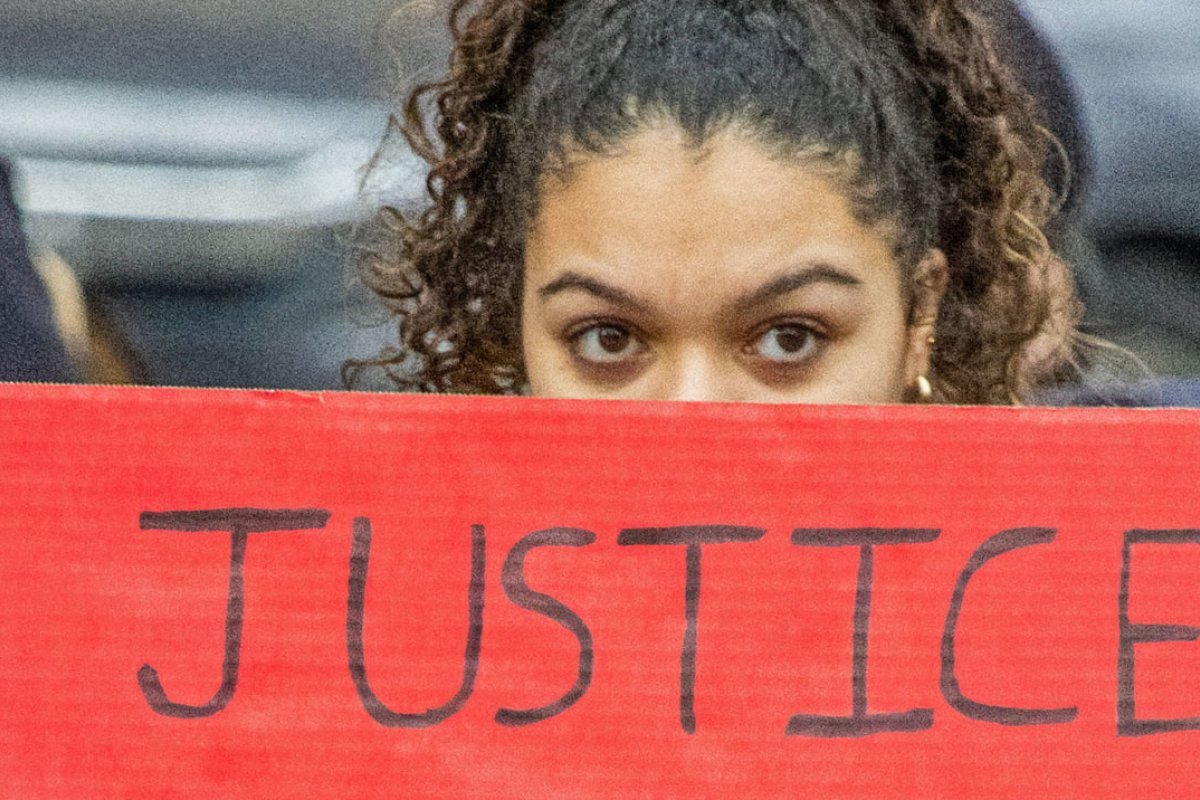
Should We Watch Videos of Racialized Police Violence?
If we choose to watch depictions of brutality, we must do so keenly aware of the moral costs, benefits, and risks.
In a recent article in the New York Times, film critic A.O. Scott questions whether American citizens have a civic duty to watch the video released by Memphis officials in which police officers assault Tyre Nichols, a Black man who three days later died in a hospital as a result of his injuries. Given the lack of transparency and delays associated with previous incidents of video-documented police violence, Scott is careful to note that his concern is not with whether officials should have released the video in the first place; his question, rather, is whether we have a moral responsibility to watch it. One reason that may lie behind such a duty is, he offers, the hope “that concerned Americans will become witnesses after the fact, our senses shocked and our consciences awakened” by the brutal harm suffered by Nichols at the hands of law enforcement officers. What Scott does not explain, however, is what the moral value of our witness is. Why should it matter, morally, that Americans bear witness to this horrific display of police violence that led to the death of a Black fellow citizen? And how can we bear witness to Black suffering in ways that avoid its commodification and exploitation?
If we are to speak of the potential moral value of bearing witness to videos of racialized police violence, we cannot do so in a vacuum, insensitive to the broader sociocultural context in which such videos are released. As Scott observes, violence toward Black Americans is embedded in popular culture and has often served as a form of public entertainment. Over the course of nearly a century, thousands of Black Americans were lynched across the American South; in many instances, lynchings were public spectacles akin to community festivals, where white crowds watched and participated in the torture and mutilation of Black victims. If one does watch the video of Tyre Nichols’s suffering, there is a moral imperative not to passively observe his suffering with indifference—or worse, as a source of perverse fascination.
The spectacle of violence, especially in a culture permeated with depictions of violence as entertainment, can easily tempt us to view other humans’ suffering as a source of morbid pleasure. In Book VI of his Confessions, Augustine describes how his friend Alypius made a commitment to avoid the Roman circuses, enslaved as he was to the pleasure he took in gladiatorial entertainment. Despite this, his friends one day persuade him to accompany them to the arena, where he vows to keep his eyes shut to the violent spectacle on display. At one point, the crowd roars, and, “overwhelmed by curiosity,” Alypius opens his eyes, utterly transfixed by the gladiatorial combat. Augustine describes his friend as if he were in ecstasy; Alypius “drank in the frenzy, not aware of what he was doing, reveling in the wicked contest and intoxicated on sanguinary pleasure.” In this episode, Augustine underscores the capacity of violence to captivate us, even when we intend to avoid its allure. When we are enraptured by violence in this way, other humans’ suffering becomes a commodified object we consume with pleasure.
Given the prevalence of Black suffering in the history of American entertainment and the moral peril of violent spectacle, there are sound moral reasons not to watch video depictions of racialized police violence. Even should viewers avoid the temptation to commodify Black suffering as a source of entertainment, repeated exposure to Black suffering and death in news and social media may desensitize audiences—particularly white audiences—to the injustice such videos are ostensibly meant to call attention to. Beyond this, there are mental health reasons not to watch videos of this sort, especially for Black viewers. In her book, Bearing Witness While Black, Allissa V. Richardson documents Black activists’ reluctance to watch videos of racialized police violence because of the trauma these videos frequently elicit. Black viewers often empathize with victims of police violence and may wish to avoid the visceral emotional distress that accompanies such empathy.
Richardson even claims that videos of fatal police encounters with Black and brown people can reinforce white supremacy. “They are a reminder of a social hierarchy that privileges police with qualified immunity, rewards racist vigilantes with internet fame and money, and punishes communities of color with death if they question that order,” she writes. In this context, videos of racialized police violence communicate to Black and brown viewers that they are inferior to the police and white people more broadly. Exposure to these videos—particularly unsolicited exposure on television news and social media feeds—can therefore take a severe emotional toll.
Is there any way, then, that watching videos of racialized police violence can have moral value? Does it even make sense to speak of “bearing witness” in this context, when watching such videos is fraught with moral peril?
If watching videos of fatal police encounters with Black victims can have moral value, we can understand this value in at least three ways. First, moral value may lie in the morally desirable consequences that follow from our witness. For example, the video of Tyre Nichols’s suffering may cause some viewers to dedicate or rededicate themselves to anti-racist education, activism, or policy reform. The consequences of their advocacy and action can, perhaps, preserve the lives of potential victims of police brutality.
Second, we may watch these videos so that we do not become desensitized to Black suffering, especially when it is a result of state-sanctioned violence. Just as there is a concern that repeated exposure to Black suffering and death may inure (white) audiences to racial injustice, there is, equally, a concern that it is all too easy for white viewers to turn their heads and avert their eyes to the horror of racialized police brutality. Videos of police violence serve as a potent, albeit tragic, disclosure of the extent to which structural racism permeates American political, social, and cultural institutions. In this sense, these videos testify to hard truths about American society that white audiences may wish to deny or overlook. Watching them may be part of a broader effort on behalf of those of us who are white to form ourselves to have a proper hatred of injustice.
What both these explanations leave out is what our watching does for the victims of police violence. How can our witness serve Tyre Nichols, specifically, if at all?
Moral philosopher Jeffrey Blustein offers one possible answer. Blustein observes that injustice not only typically results in physical or material harm (or even death, as is often the result of police violence), but also communicates to victims that their lives and interests matter less than those who perpetuate injustice. It is in this context that we can speak of bearing witness, where this refers to an intentional choice to watch or interact with depictions of injustice with sustained attention to the evil on display and out of a sense of moral responsibility to its victims. “Bearing witness to past suffering sends a countermessage” to the symbolic harm suffered by victims of injustice, Blustein explains. In response to this harm, bearing witness “symbolically asserts the moral status of the victims, their coequal membership in the moral community, by giving them and their suffering a voice.” On this view, the moral value of bearing witness to Tyre Nichols’s suffering lies in the symbolic restoration of the status Nichols was denied—that of a human being with dignity.
Notably, in the video released by Memphis officials, we do hear Tyre Nichols’s voice. In the wake of Nichols’s death, we are called to keep his voice alive and insist that it is heard. To do this, we do not need to watch the video of Nichols’s suffering, and there are several moral reasons not to do so. If we do choose to watch the video or other depictions of racialized police violence, however, we must do so keenly aware of its moral costs, benefits, and risks. Only then can we hope to avoid the commodification and exploitation of Black suffering.
Featured image by Paul Becker is licensed under the Creative Commons Attribution 2.0 Generic license.


